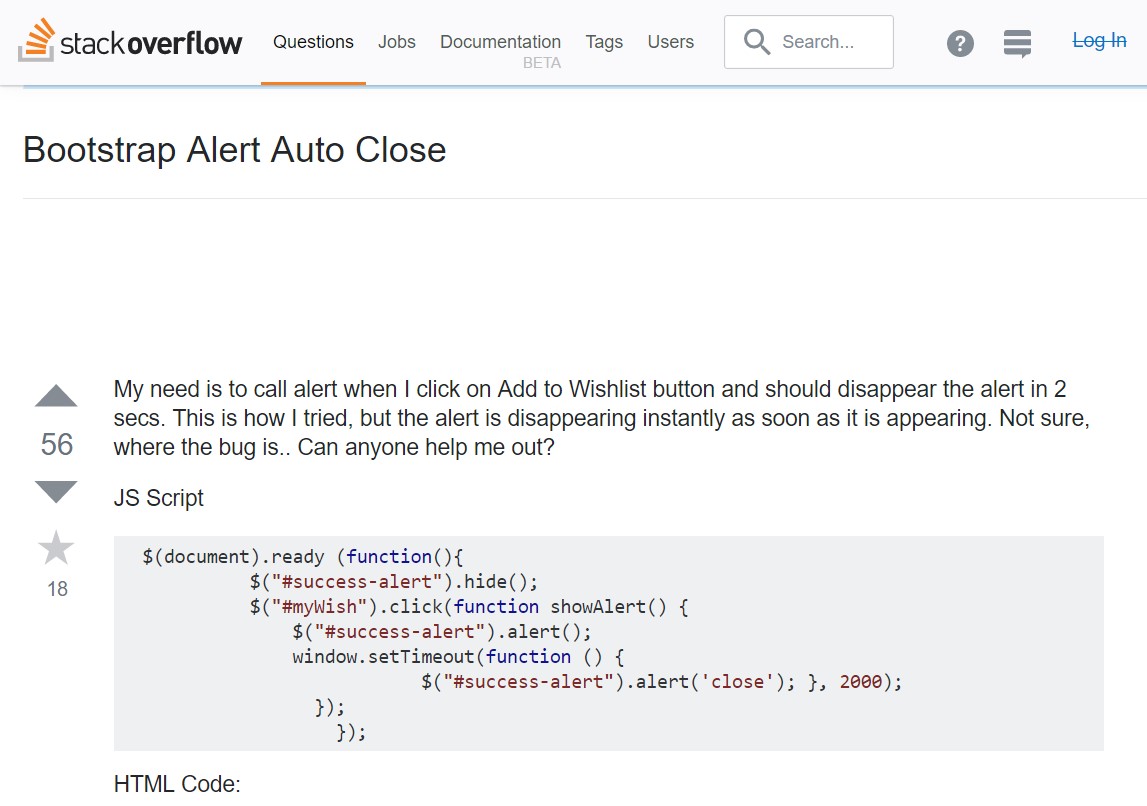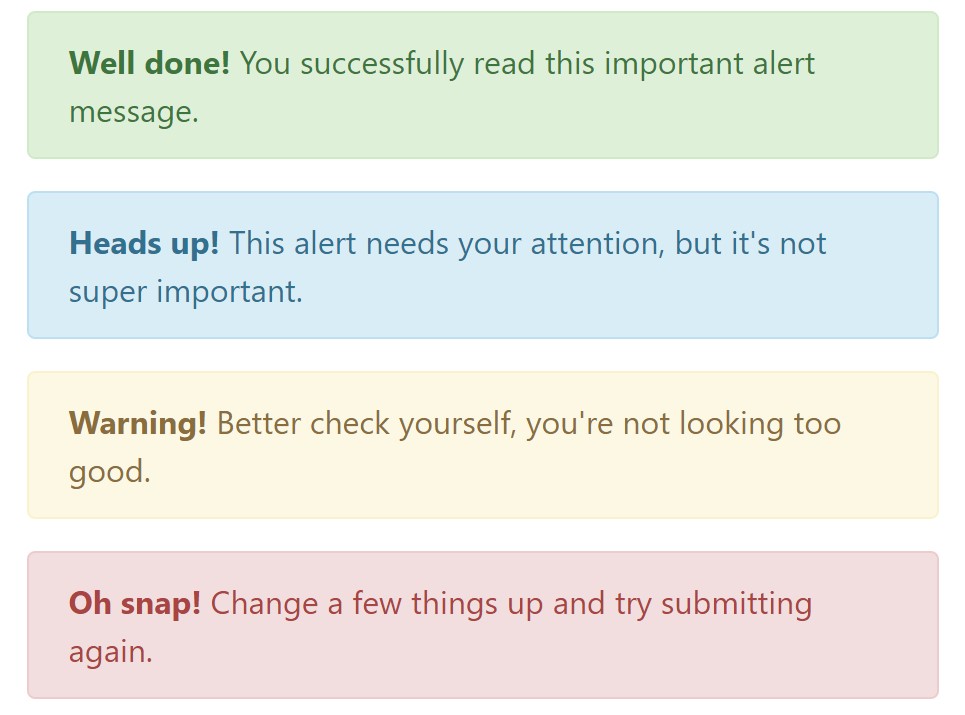Bootstrap Alert Jquery
Overview
The alerts are created by all these components you even don't think of until you truly get to really need them. They are put to use for giving prompt in time feedback for the user interacting with the web-site hopefully pointing his or hers attention to a specific direction or evoking special actions.
The alerts are most often used along with forms to give the user a tip if a area has been filled in wrongly, which is the appropriate format expected or which is the condition of the submission just once the submit button has been pressed.
As the majority of the elements in the Bootstrap framework the alerts also do have a well-kept predefined visual aspect and semantic classes that can possibly be used according the particular condition in which the Bootstrap Alert has been presented on display screen. Considering that it's an alert text message it is very important to get user's focus but after all leave him in the zone of comfort nevertheless it might even be an error report. ( discover more)
This gets fulfilled due to the use of gentle pastel colours each being intuitively attached to the semantic of the message information just like green for Success, Light Blue for general info, Light yellow aiming for user's attention and Mild red revealing there is actually something wrong.
<div class="alert alert-success" role="alert">
<strong>Well done!</strong> You successfully read this important alert message.
</div>
<div class="alert alert-info" role="alert">
<strong>Heads up!</strong> This alert needs your attention, but it's not super important.
</div>
<div class="alert alert-warning" role="alert">
<strong>Warning!</strong> Better check yourself, you're not looking too good.
</div>
<div class="alert alert-danger" role="alert">
<strong>Oh snap!</strong> Change a few things up and try submitting again.
</div>Coloration of the web link
It really might actually not be noticed at a glance but the font color also is in fact following this coloration too-- just the color tones are much much darker so get intuitively takened as dark however it's not exactly so.
Same runs not only for the alert text message in itself but even for the web links provided in it-- there are link classes taking off the outline and colouring the anchor elements in the correct color so they fit the overall alert text look.
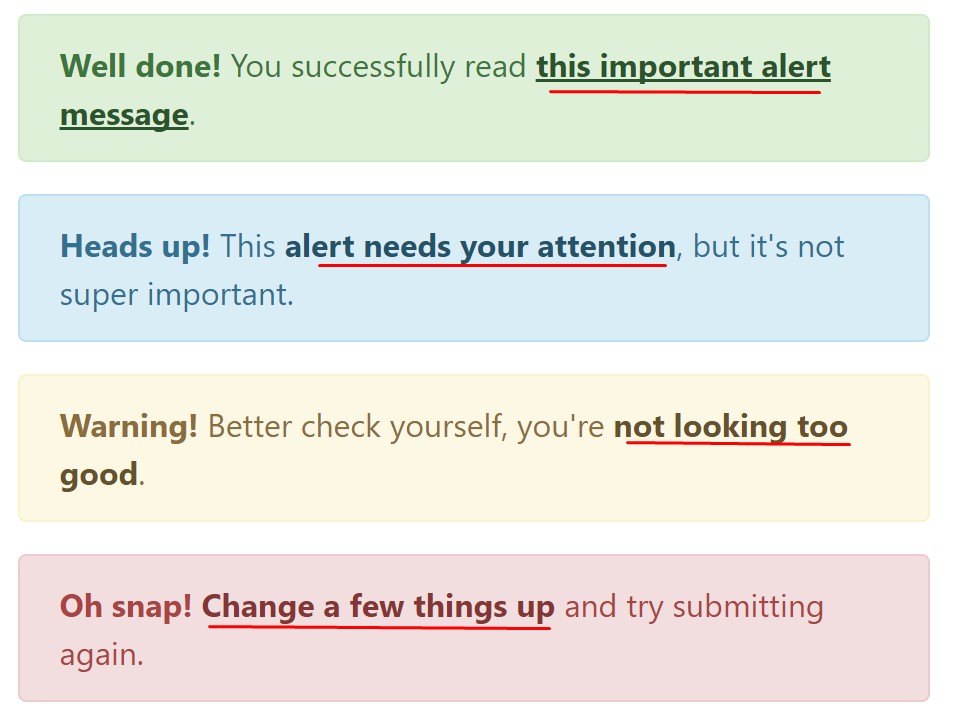
<div class="alert alert-success" role="alert">
<strong>Well done!</strong> You successfully read <a href="#" class="alert-link">this important alert message</a>.
</div>
<div class="alert alert-info" role="alert">
<strong>Heads up!</strong> This <a href="#" class="alert-link">alert needs your attention</a>, but it's not super important.
</div>
<div class="alert alert-warning" role="alert">
<strong>Warning!</strong> Better check yourself, you're <a href="#" class="alert-link">not looking too good</a>.
</div>
<div class="alert alert-danger" role="alert">
<strong>Oh snap!</strong> <a href="#" class="alert-link">Change a few things up</a> and try submitting again.
</div>Extra information and facts for alerts
A aspect to consider-- the color options carry their clear interpretation just for those who in fact get to notice them. It's a good thing to either make sure the visible text itself carries the meaning of the alert well enough or to eventually add some additional descriptions to only be seen by the screen readers in order to grant the page's accessibility.
With links and basic HTML tags like strong for example the alert elements in Bootstrap 4 can also have Headings and paragraphs for the situations when you would like to present a bit longer web content ( get more info).
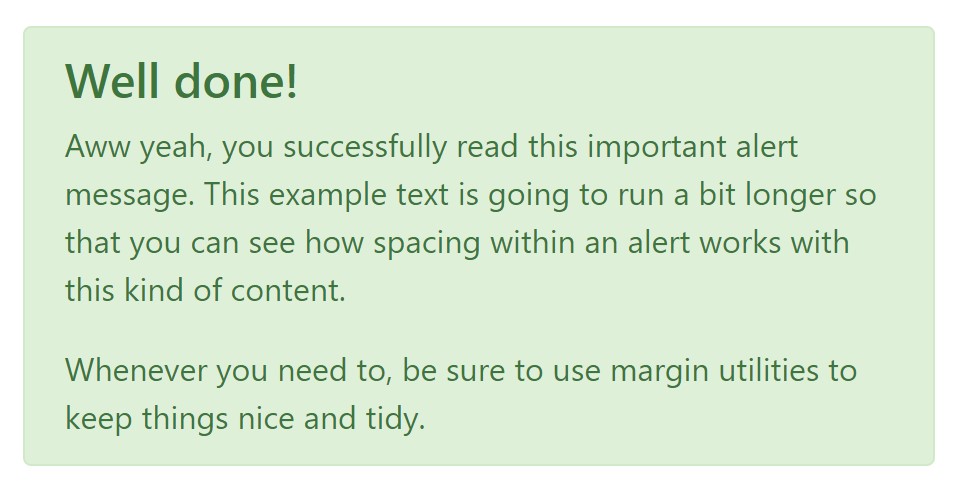
<div class="alert alert-success" role="alert">
<h4 class="alert-heading">Well done!</h4>
<p>Aww yeah, you successfully read this important alert message. This example text is going to run a bit longer so that you can see how spacing within an alert works with this kind of content.</p>
<p class="mb-0">Whenever you need to, be sure to use margin utilities to keep things nice and tidy.</p>
</div>Dismiss the alert
You can additionally provide an X icon to dismiss the alert and include a cool transition to it to once more make sure the visual comfort of the Bootstrap Alert Styles visitors.

<div class="alert alert-warning alert-dismissible fade show" role="alert">
<button type="button" class="close" data-dismiss="alert" aria-label="Close">
<span aria-hidden="true">×</span>
</button>
<strong>Holy guacamole!</strong> You should check in on some of those fields below.
</div>Currently there are four kinds of contextual alert messages in Bootstrap 4 framework - they are titled Success, Info, Warning and Danger. Do not allow however their titles to narrow down the way you are actually working with them-- all of these are just some color schemes and the method they will be actually implemented in your site is absolutely up to you and completely depends on the certain situation.
-- if the color scheme of your page utilizes the red as main color it might be quite appropriate to display the alert for successful form submission in red too using the predefined alert danger appearance in order to better blend with the page and save some time defining your own classes.
Anyway the predefined alert classes are nothing but some consistent appearances and the responsibility for using them lays entirely on the designer's shoulders.
JavaScript behavior of the Bootstrap Alert Jquery
Triggers
Enable dismissal of an alert via JavaScript
$(".alert").alert()Enable removal of an alert using JavaScript
Or else with data attributes on a button within the alert, as indicated in this article
<button type="button" class="close" data-dismiss="alert" aria-label="Close">
<span aria-hidden="true">×</span>
</button>Take note of that shutting an alert will remove it from the DOM.
Techniques
$().alert()$().alert('close')Events
Bootstrap's alert plugin exposes a few events for fastening inside alert features.
close.bs.alertclosed.bs.alertCheck out a couple of online video tutorials relating to Bootstrap alerts
Connected topics:
Bootstrap alerts authoritative records
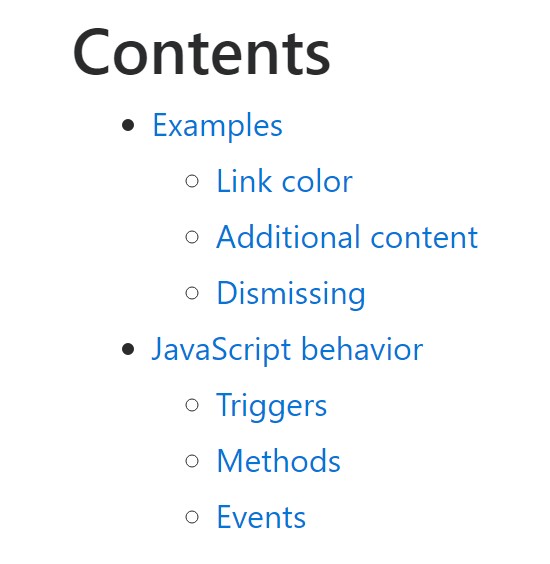
W3schools:Bootstrap alert tutorial

Bootstrap Alert Issue
